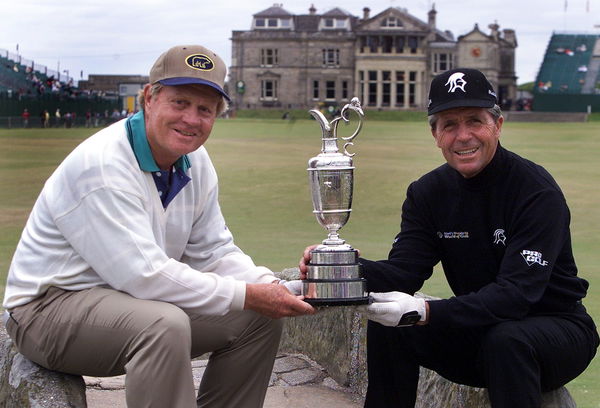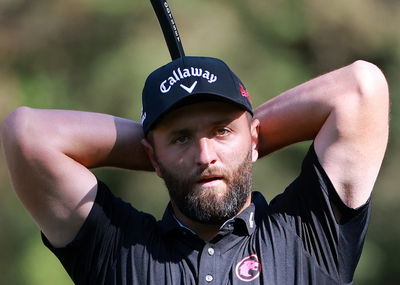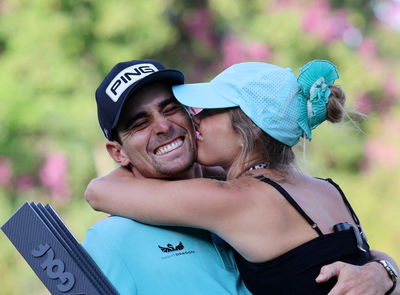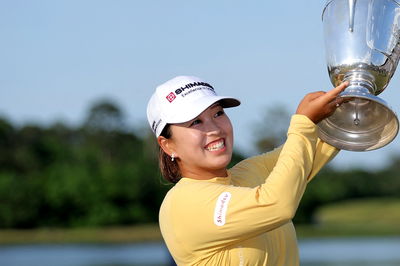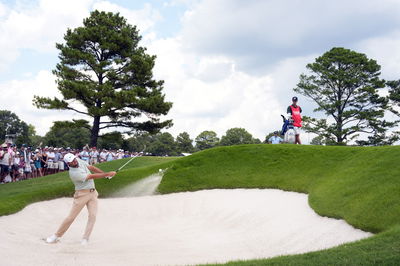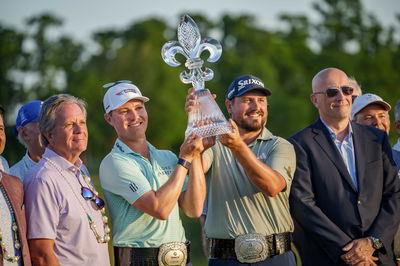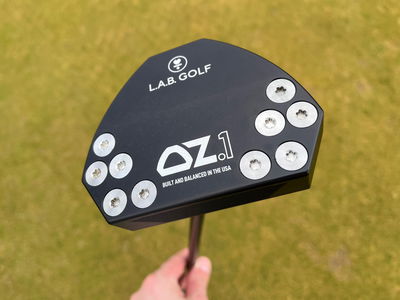Day in the life: Luke Donald's caddie John McLaren
Donald's bagman on the 'intense' role of cheerleader, drill sergeant and shrink.
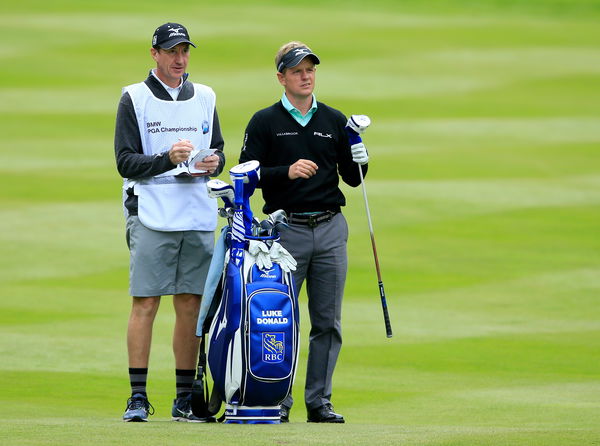
The days of "turn up, keep up, shut up" are long gone. Caddies are a player's wingman, confidante, cheerleader, drill sergeant, psychologist, coach, strategist. Carrying the clubs is almost an afterthought.
Luke Donald's bagman John McLaren gave GolfMagic an insight into the life of a caddie and the challenges of St Andrews.
"The caddie’s role has increased dramatically. It is so much more intense. Modern players leave no stone unturned and Luke expects a lot from me.
I know him better than anyone, including his team and family. Nobody is as close as caddie in terms of being out there when it is actually happening. When the crunch comes it is just you two. You need to be confident in what you’re saying and that is based on what you’ve learned of his personality.
Gary Player Open special: 'I slept on the beach at St Andrews'
By far the most important aspect of a caddie’s job is to be observant in all areas and that includes mood changes, ups and downs. I can see it just in the way he walks. I’ve seen him happy, sad, upset, over the moon. We’ve been together for five-and-a-half years, and we’re good mates off the course, but our working relationship is very professional.
We both respect each other which is wonderful in this business. I view him as a great player and a proper professional. If he gets down I might bring something up in our past and probably tell him something about posture: 'Come on, mate, shoulders back, chin up, let’s walk like we’re number one in the world, I’ve seen you at your best and this is not it so let’s get back to that'. I’ll try to bring him back to a place I know he can be at his best.
Generally, he responds very well. He might say, 'Sorry, I didn’t realise I was slumpy'. He might ask me to leave me alone from time to time and I’m fine with that. I’ll say, 'OK, you’ve got 100 yards, but I need you back in the game after that because we’ve got a job to do.'
That ultimately is the player and caddie’s job - to get from the first to the 18th in as few shots as possible. It doesn’t matter how, and sometimes you have to dig deep to do that.
The US Open at Chambers Bay was a mental and patience challenge, and we both ran out of energy on the Sunday but that was unusual. The course didn’t put the US Open in a good light.
St Andrews is a unique challenge. It’s like no other golf course. The strategy is different. It’s a risk-reward golf course, and if you are willing to take it on you can get a score out of it. I’ve been caddieing 23 years and must have been around the Old Course about 90 times.
Ken Brown's guide to the Old Course
You think you know it like the back of your hand but there’s always something you haven’t spotted. It’s normally due to a change in wind direction, and suddenly a bunker you’ve never seen or even considered comes into play. Sometimes your player will say, 'I didn’t know that was there' and you have to pretend you knew all about it.
There are a few blind shots, although they have cleared out a lot of gorse, and it’s very hard to get the ball very close so you need to hit to zones on the greens. The pins are often very tight to slopes and that is really its main defence, pin positions and wind. The area around the turn seems like it has its own little wind system, on that little nose sticking out into the water. It’s very variable and a very exposed golf course.
At St Andrews we’re used to playing it 20 yards short downwind and running it up but that’s not the case this year. It’s softer than I’ve ever seen it. Into the wind you can stop it in a yard and downwind three to four yards.
The mark of a good caddie is adapting to a changing environment and at St Andrews it can change dramatically. You can drive 240 into the wind one day and fly it 320 downwind the next. Augusta is also a unique challenge but it’s a bit more painting by numbers.
Simon Dyson column: why the Open is the best major
If we have an early tee time, say 8am, I’ll walk the course about 5am to get a look at the pin positions with my own eyes and then meet Luke about an hour before the off. He’ll arrive about an hour-and-a-half before his start. We’ll spend 50 minutes on the range and then head to the first tee.
I’m also a student of the game and spend a lot of time with Luke’s coach Pat Goss so I have plenty of technical input and can offer a swing thought if he needs it.
I wouldn’t say I get nervous, more excited. The first tee shot at the Ryder Cup is pretty nerve- wracking but it’s brilliant, too. I played rugby and cricket as a youngster and it brings back those memories of being in a team. You feel like you’re at a football match. It’s great hearing the people pulling for you.
We try to treat it like any other shot so I’ll give Luke the line and wind direction and tell him he’s done it a thousand times before. Walking down the fairway we might then say, “wow, wasn’t that great”.
Luke’s a thoroughly model professional, unlike some of the old-style characters.
I used to caddie for Tony Johnstone, who had a habit of tearing off his glove when he got angry. At one event in Portugal he had a shot over a lake and it was at the edge of his capabilities but he was very aggressive so I knew he would take it on.
I put a spare glove in my left pocket and on further reflection I put one in my right pocket, too. His shot duly hit the far bank and rolled back into the water. He irately tore off his glove so I handed him a new one. He hit another into the lake and tore that glove off so I gave him a third one. He fell to his knees laughing, saying 'OK, you’ve beaten me this time.'
Luke and his team have adopted a new philosophy so we have chosen not to head back to range after a round.
The idea is we should be spent by 18, so we’ll spend 15 minutes recapping the day and then he might have a quick putt and physio and be off.
At US Opens and the Open we often share a house, although not this year as he qualified so late so we couldn’t plan. It’s usually a few caddie friends of mine and Luke and it keeps him relaxed and we enjoy his company.
Claret Jug at St Andrews is golf's holy grail
We are together 27 weeks of the year, six to seven days a week, eight to 10 hours a day so most of the time we stay apart to preserve the relationship although I’ll have dinner with him at least once a week.
At St Andrews, I’m in a house with Henrik Stenson, his caddie Gareth Lord and Ian Poulter’s caddie Terry Mundy. We generally stay in and cook, have a glass of wine and have early nights.
People often speak of the Dunvegan Hotel being a great caddie hangout, but that’s a slightly bygone era now. Sure, on certain nights if you don’t have to get up it’s a great spot, but you don’t see guys in there until the early hours any more. The job is too difficult, too demanding these days."
